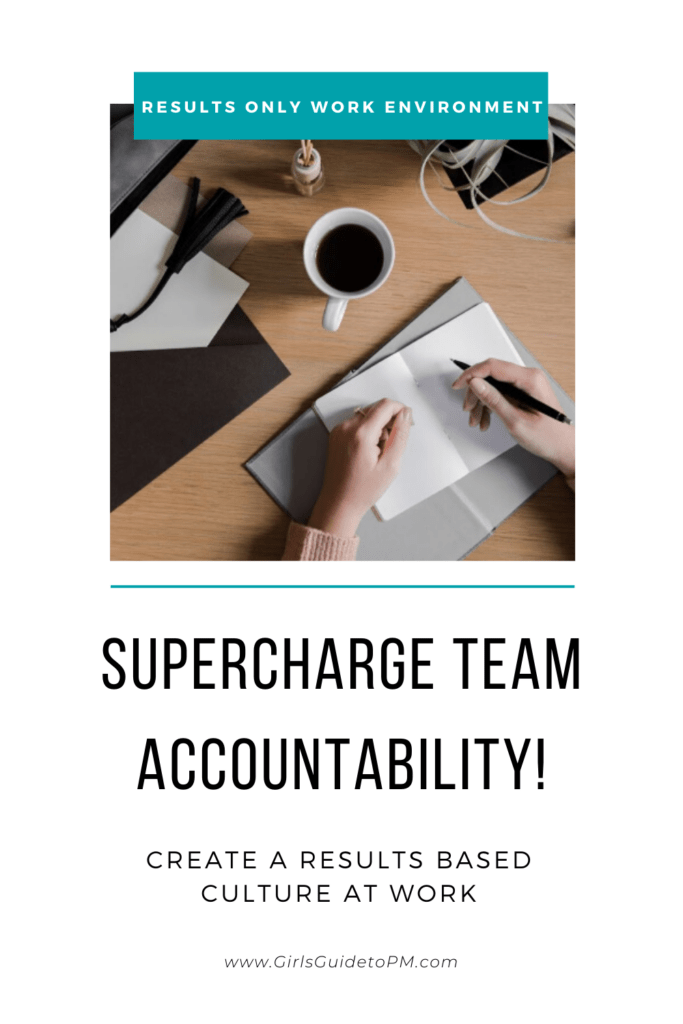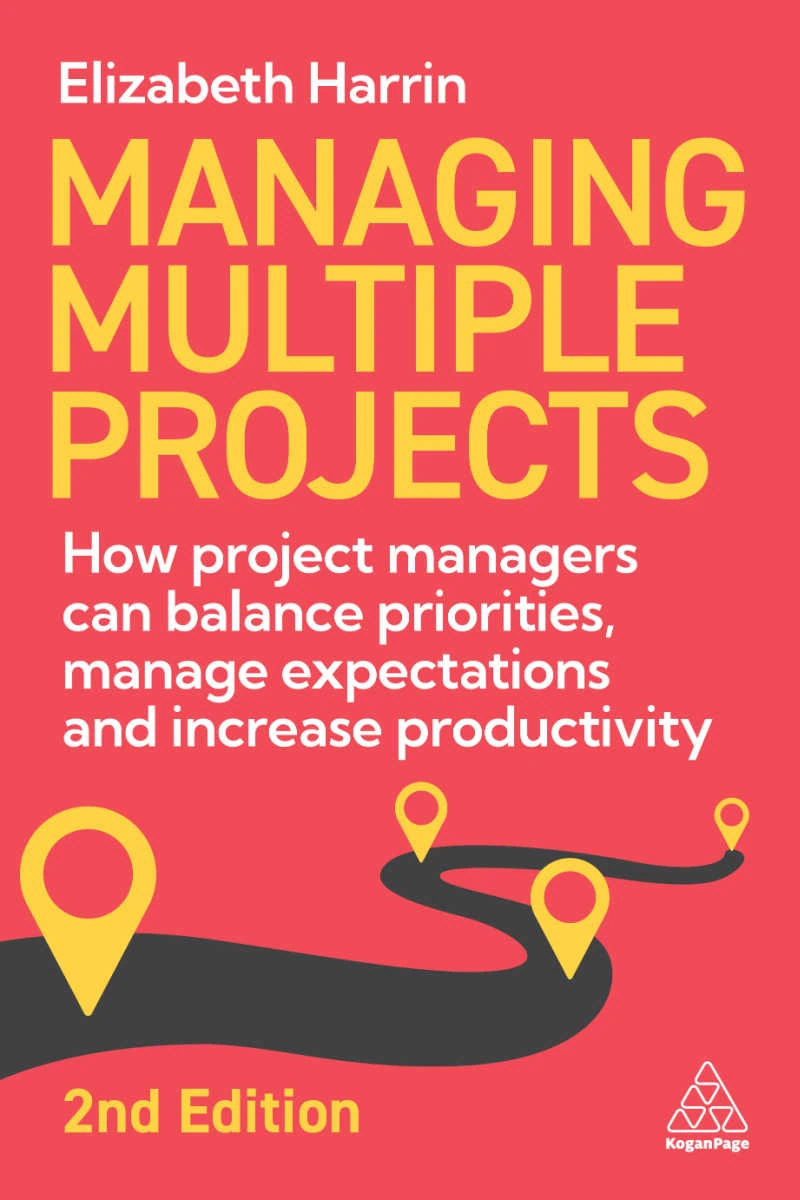ROWE: The Results-Based Culture that Supercharges Team Accountability

When I regularly traveled into London, I’d be at my desk by 7.45am. I was often one of the first people in, and I know others noticed.
In reality, I did it because I left work at 4.30pm, and that meant I could do my commute there and back and always get a seat on the train. Also, I’d be home by 7pm, and I could tuck my children into bed.
However, I nearly always worked in the evening too, and often caught up with emails at the weekend. Staying away in a hotel was a joy. Not only could I get a decent night’s sleep (parents with small children will understand), I could also work until 10pm and not be interrupted.
I was sucked into the trap of too much work, but also being seen to do work. My colleagues sent me emails at 10pm, so it felt like I should too.
Look at me, look how dedicated I am. I’m working late too.
But that’s no way to live, and certainly no way to work. That’s where ROWE comes in. In this article I’m going to explain what ROWE is and how it can shape your team into something where truly exceptional results and high accountability are possible.
ROWE is a different way to approach work. First, let’s get clear on what we are talking about. What does ROWE mean?
What is ROWE?
Let’s define ROWE.
ROWE stands for Results Only Work Environment.
The founders of the ROWE approach (more on them in a minute) define it like this:
A Results-Only Work Environment is a work culture where there is an equal balance between accountability and autonomy for every person.
ROWE means a way of managing human resources whereby they are rewarded for results, not hours worked. In other words, earning a salary is linked to output, not how much time you spend at your desk. If you can hit your targets in an afternoon, take the rest of the week off.
You can see how this culture will encourage creative thinking and focus, as well as innovative approaches to problem solving. It sounds perfect for project teams!
Where did ROWE come from?
ROWE was born as a result of two HR managers trying to come up with better ways to introduce flexibility to the work environment at Best Buy in the USA.
Cali Ressler and Jody Thompson created the concept, and implemented it at Best Buy. They then went on to write a couple of books and set up a consulting firm to share their ideas with other companies that could also benefit.
What is a ROWE workplace?
If I was to describe the elements of ROWE, I’d say:
- Team members are rewarded for their contribution
- There’s a focus on activities that actually drive business results (so project selection is key).
If your workplace subscribes to ROWE-thinking, you’ll probably see these things:
- No one talks about how many hours they work but they probably track their time.
- There is no fixed policy on vacation as you manage your own time off.
- Team members are measured by output, not by presence, so people are out of the office as much as they like.
- People have complete control over how they do their work and where they work from.

Results Only Work Environment Pros and Cons
Let’s look at the pros and cons of ROWE so you can better decide if it’s an appropriate environment for you.
Pros of ROWE
The thing I like most about ROWE work environments is that employees are treated like adults. There is no need for ‘toddler’ management techniques, because you aren’t filling desks with people who need a lot of hand-holding.
There’s no creepy employee tracking software checking you are at your desk via your webcam or tracking your keystrokes. You’re a grown up, and you’re regarded as one.
Flexibility is another benefit. Want to start after the rush hour? No problem. No one is going to judge you for turning up after 9am or leaving before the trains get busy. You’ll never miss another school play or sports event again.
In teams where the output can be measured easily, ROWE sounds like a win.
Team collaboration improves as people need each other to achieve collective goals. Tools that prompt shared visibility, like Toggl Track, help the team to coordinate activities without resorting to micromanagement.
People are inspired to come up with efficient ways of working because the result is what matters. Self-starters will thrive.
ROWE teams also benefit from reduced turnover and higher motivation.
Finally, if you have fewer people coming into the office, you can manage with a smaller office footprint and reduce business costs.
Cons of ROWE
Using ROWE seems harder in project-driven environments, or when a lot of collaboration is required.
In ROWE teams, people work to deadlines, but those deadlines have to be realistic. Projects with a high degree of uncertainty often don’t have enough detail to allow for hard deadlines.
If your team has a high proportion of new starters or inexperienced people, they might need more guidance and support in completing their tasks than ROWE would normally expect.
However, as with all ways of working, you can adapt the principles to fit your own culture. If you ‘grow your own talent’ managers can spend additional time supporting those colleagues who need it until they can work autonomously towards company goals in a measurable way.
ROWE management also need to be on the look out for slackers, because however hard you try to recruit the best talent, someone will always lose their motivation or work out how to abuse the system.
Managers also need to watch out for adherence to ethical standards. While I know you’d never do this, when you are targeted on results and not how those results are achieved, the door is wide open to shady practices.

5 Ways to improve team accountability
So you want to move your project culture to caring about results, not presence. Jolly good.
ROWE works best where teams have high accountability. Frankly, building an accountable team is useful regardless of the kind of work culture you have. Here are some tips for improving accountability across your team.
1. Build trust
Remote and virtual teams need trust. (And so do co-located teams.)
Do everything you can to build trusting working relationships so your team has the confidence that they’ll succeed together.
2. Have clear roles and responsibilities
One of the challenges with a team working to the ROWE system is that there’s a risk tasks fall through the cracks. This happens when no one believes the job fits within their remit.
You can stop that from happening by having clearly defined roles and responsibilities laid out at the beginning of the project.
3. Set clear goals
Set clear goals for each contributor. Make sure everyone knows who is accountable for what so they know who to work with. Goals need to be agreed with the individual. They need to be realistic and fair, and most importantly, measurable.
No results, no job. That’s how ROWE should work.
That can be hard if you don’t have the authority to sanction individuals who don’t pull their weight so think about how you can involve line managers to support the effort.
4. Work out how you are going to collaborate
Project teams rely on good collaboration and stakeholder engagement. How do you get that if you don’t know when people are working? OK, most people will fall into a pattern, but if your hours are not predictable, it could be difficult for colleagues to work alongside you.
Make sure the team knows how to collaborate and communicate effectively. Even sharing your calendar so people know where you are can be a help.
5. Be data-driven
Time tracking and ROWE might not seem logical partners, but time management data provides huge, relevant insights into productivity. That data helps project managers and teams plan their work more effectively.
What companies use ROWE?
ROWE might sound pretty radical but it’s used by some very ‘mainstream’ companies, such as JLBuchanan and Canada Mortgage and Housing Corp. (CMHC) – which became the largest organization in Canada to implement ROWE when it did so in 2018.
According to The Washington Post, even The White House gave it a go (it’s not clear if the Office of Personnel Management is still using ROWE – it doesn’t look like it).
Our partner, Toggl Track, uses a ROWE model for their team of 80+ working from over 30 countries. When navigating different cultural approaches to and expectations around work, ROWE gives every team member the opportunity to contribute without predefining how they should go about doing so.
And they make it work, with over 4 million active users toggling their time.
How to go ROWE
The move to a results-oriented workplace requires a mindset change. As with all transformative change, it might take longer for some colleagues to get there than others.
It is quite a different way of working.
At the time of writing I am self-employed so I do work in a ROWE environment in that I set my own hours, work priorities and time off policies. But ROWE with a team is different!
When I worked in a large FTSE company, we used elements of ROWE as a step beyond having a flexible working policy, but without adopting everything company-wide.
As with all culture change, make the changes you feel would best fit your workplace to get the results you want.
Can you use ROWE on projects?
Yes, you can use ROWE on projects. I’ve worked for a manager who strongly believed that output and customer satisfaction (i.e. the value we delivered) counted for a lot more than sitting at your desk for hours.
He modeled ROWE in how he worked and he expected his senior team to have the same approach. It felt nice. Like we were respected, accountable and worthy. I wanted to do well because I was listened to, and I mattered. My work mattered.
Unfortunately, not all bosses run their teams the same way.
Unfortunately, not all projects work out either.
If you are going to be judged on results, we all know that the project manager can do the best job possible and the project still fail for some reason. It’s not always the project manager’s fault, so it’s hard to see how accountability for project success would work out.
You can use ROWE on projects but if the rest of the company isn’t ROWE-d, then you’ll find the mindset change harder for some team members to adapt to.
They might be micro-managed in some areas of their work, and then you let them operate with a lot of accountability and flexibility. Some people are going to find that hard to get used to.
Is a results focused environment a fit for you?
Projects lend themselves to being results-focused environments because we work towards a clear deliverable. So in theory, ROWE and adopting a results-oriented way of working should fit perfectly with what we do anyway.
However, as with all culture change, think about how you can introduce the idea of ROWE to your team and adopt it in a way that works and fits your organizational culture.
Consider what you want to be different and how you can get there – then go ahead and smash your goals by focusing on outcomes, not hours worked.
Pin for later reading:


